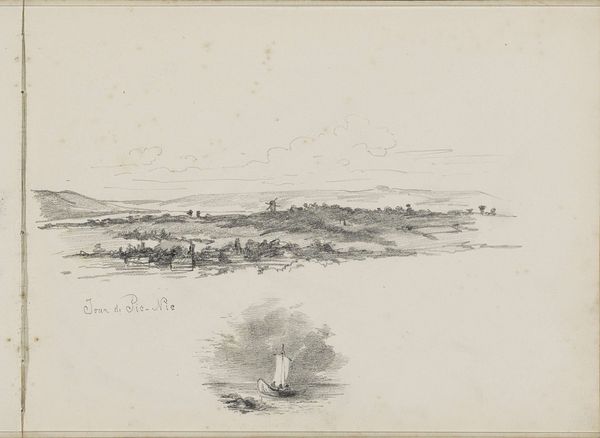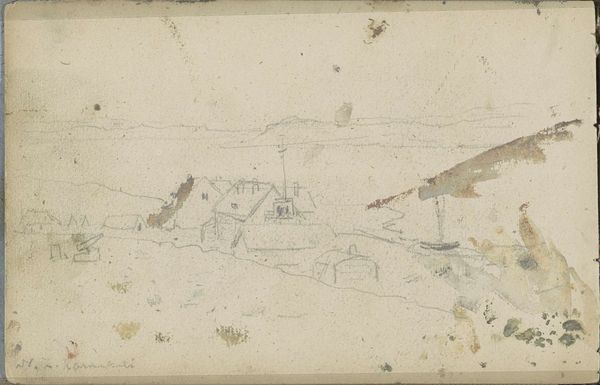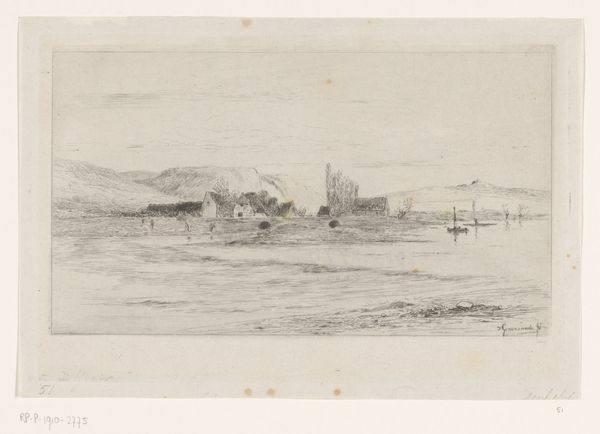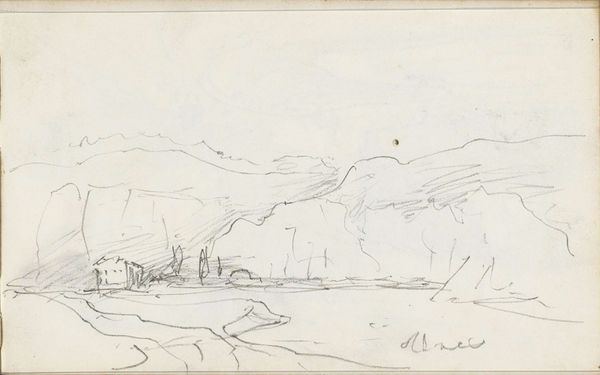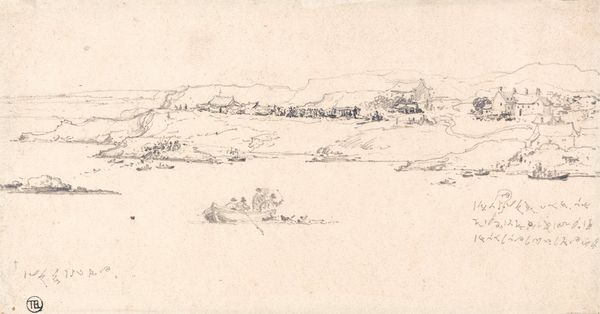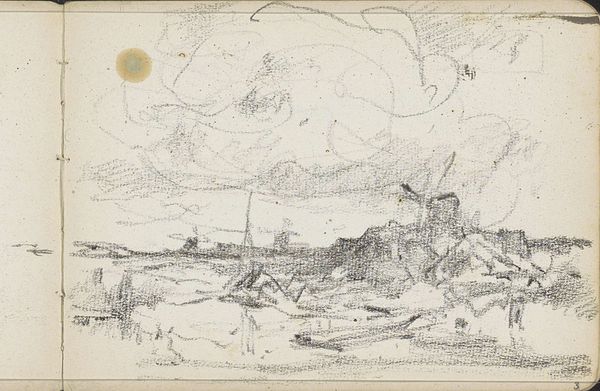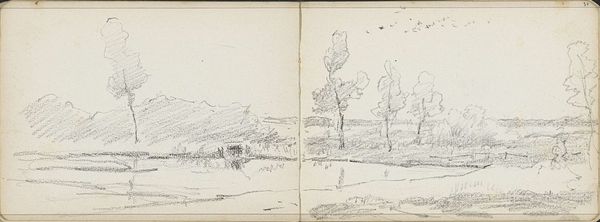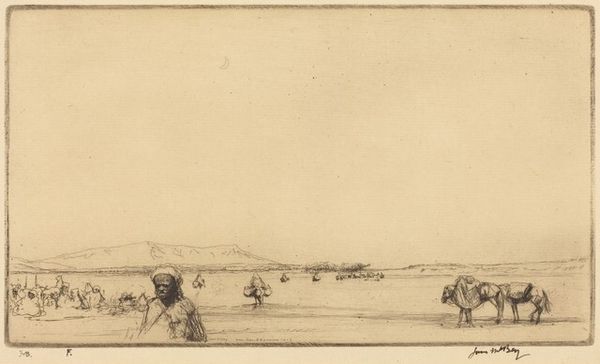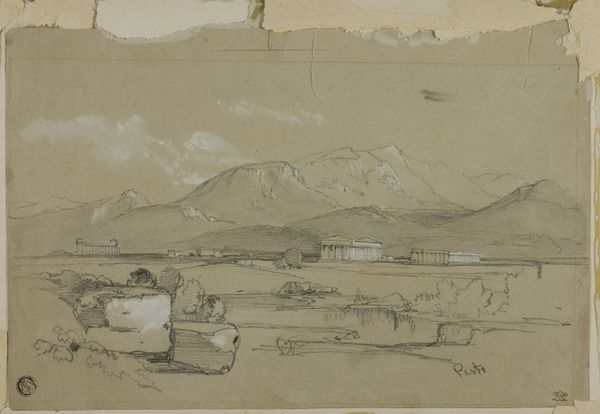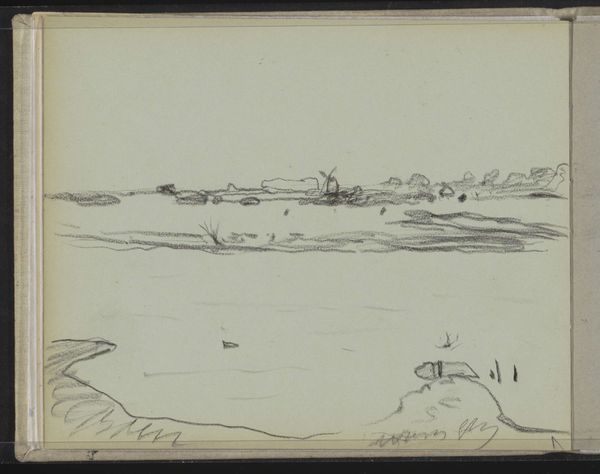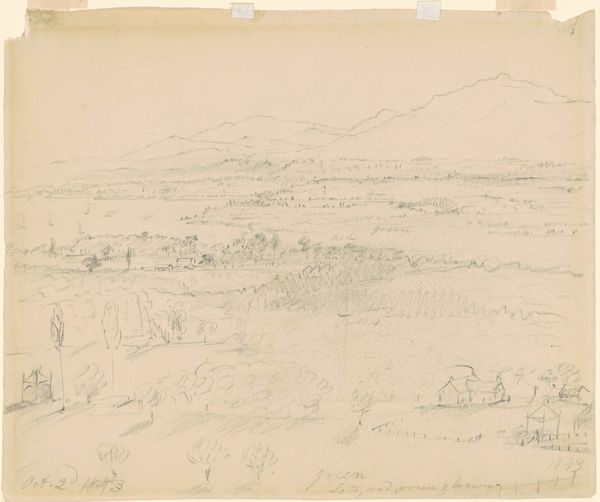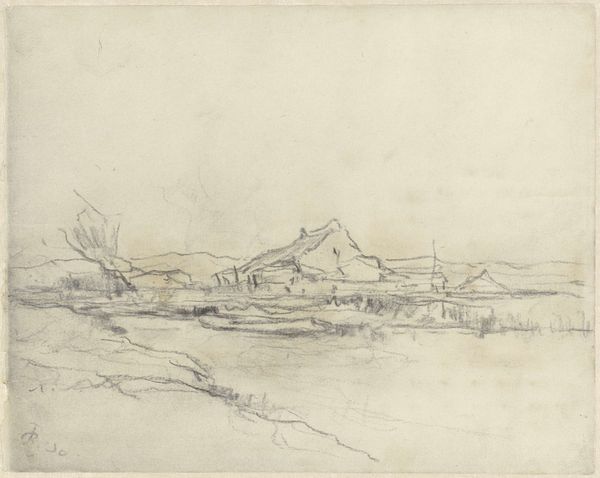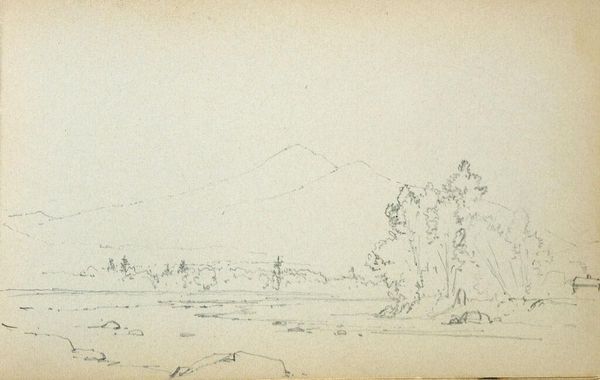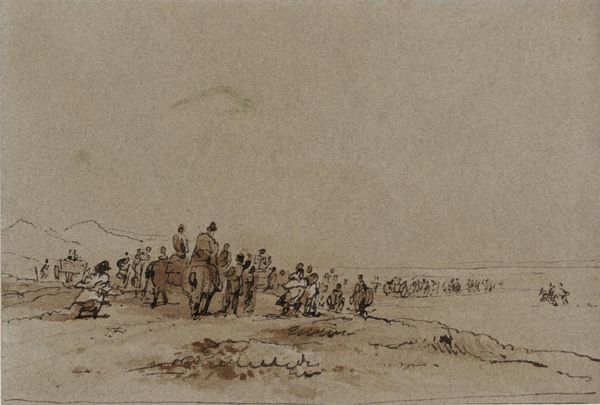
drawing, paper, pencil
#
drawing
#
landscape
#
paper
#
pencil
#
realism
Copyright: Rijks Museum: Open Domain
Curator: Looking at Louis Apol’s “Gezicht op Vardø” from 1880 here at the Rijksmuseum, the first thing that strikes me is the quiet stillness it evokes. It's a pencil drawing on paper, isn't it? The delicate lines create such a tranquil scene of this coastal town. Editor: Yes, it's a humble yet captivating drawing. I am fascinated by how Apol captured this vista utilizing readily available materials: paper and pencil. This begs the question of access. Pencil sketches were far more reproducible and accessible than a painting for the middle class, right? Curator: Precisely. The very act of sketching, of course, situates it in a historical moment, documenting Vardø’s relationship with the sea and the social and economic activities intertwined with fishing and trade, which has made this small harbor town so vital. I can see that little fishing vessels fill the harbour of the settlement located in the Arctic Circle. Editor: The marks are not trying to deceive you. One can almost imagine Apol sketching outside - which suggests an immediacy in capturing the world around him. It invites questions around the commodification of art - it does, to some extent, feel very removed from the grand oil paintings which are also featured here. Curator: Indeed. It’s a study, maybe a preparation for a painting, allowing the viewer a peek into the artist’s process. However, I can’t help but consider its broader cultural and political implications; during the late 19th century, increased visual depictions, especially those of landscapes and seascapes, boosted tourism to that remote part of Norway. Apol was part of this tradition! Editor: From a materialist viewpoint, the very existence of art relies heavily on its connection with nature and the production industry: both intimately woven with socioeconomic implications and human experience. Vardø is at the edge, literally, both geographically and materially! It prompts reflections about resources and our connections to nature. Curator: I agree. Ultimately, looking at "Gezicht op Vardø" tells us a lot about the exchange between humans and places. Editor: It really does, through humble materials that invite intimate reflections!
Comments
No comments
Be the first to comment and join the conversation on the ultimate creative platform.
